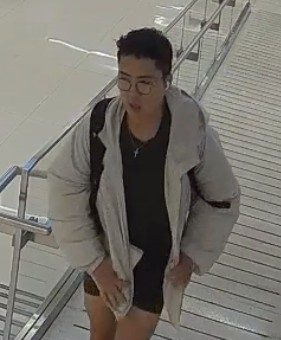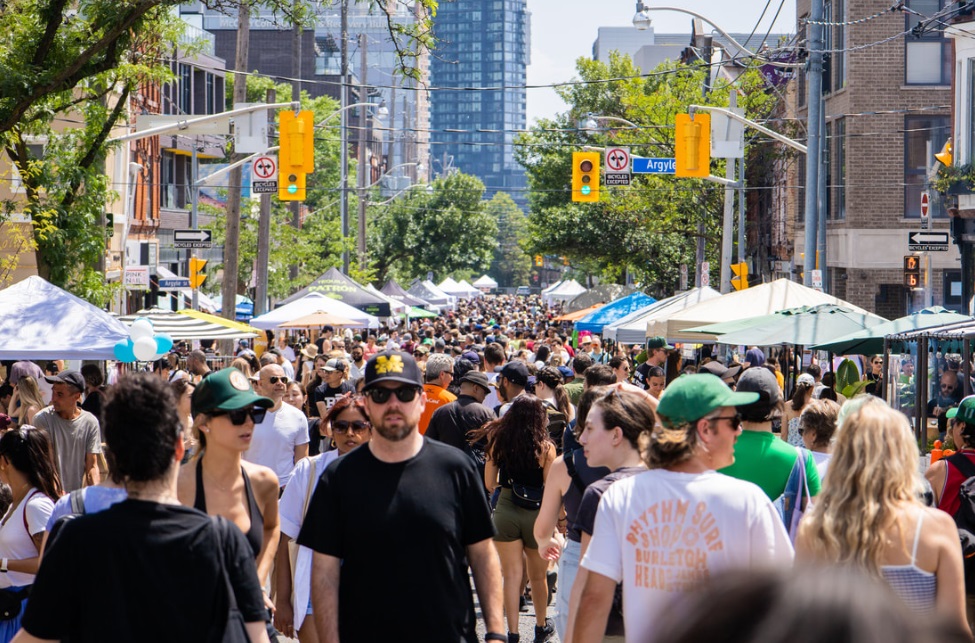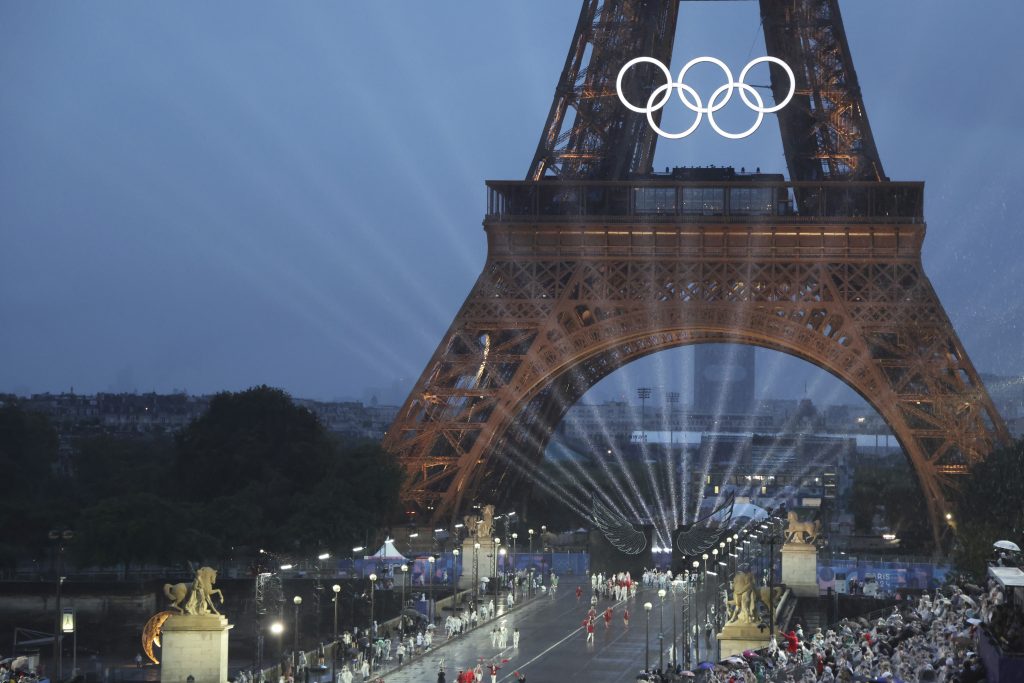Garage murals in Harbord Village celebrate and foster community
Posted April 14, 2023 9:48 pm.
Last Updated April 15, 2023 1:39 pm.
Harbord Village in the University neighbourhood of Toronto is home to the well-loved Tranzac Club, but not-so-well-known are the impressive garage murals in nearby David French Lane that the club played a major role in creating.
In 2017, Tranzac, a non-profit organization, was looking to change and revitalize the mural on the side of their building and management took it as an opportunity to get to know their neighbours.
“We are a performing arts venue, but we are embedded directly across from various neighbours, various residences. And so we did want to have a relationship. We do want to look for these opportunities to maintain or enhance, deepen the connection with our neighbours,” explains executive director Matthew Fava.
The club applied for the partnership program offered by StreetARToronto – an initiative launched in 2012 by the city’s transportation services division to support and celebrate local street and graffiti artists.
“The program supports non-profit organizations, individual artists and artist collectives to do a large scale project in their community — one that really involves community members and to share a story about the community and bring people together,” says project manager Catherine Campbell.
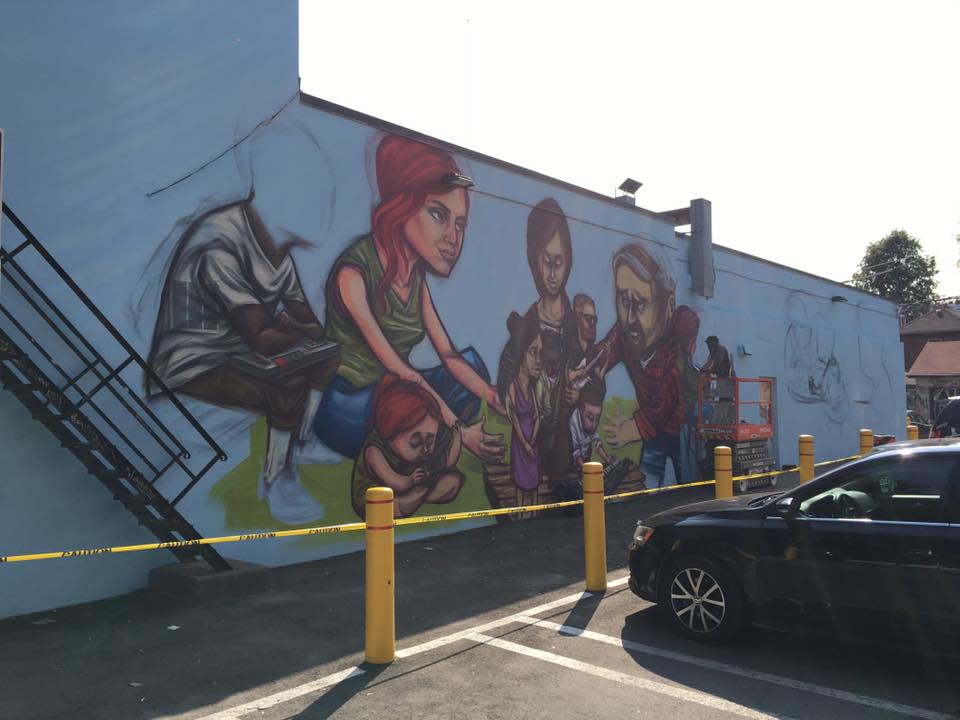
The Tranzac Club mural in progress in 2012. Credit: FACEBOOK/Tranzac Club
Fava explains that since they were already going through the process with the city, it was a natural next step for them to try and maximize the impact of the project and provide opportunities for local artists, just as they do inside the club.
“The idea that we could take it and extend it and also extend more opportunities for artists to have that public space to showcase their talents, to showcase their aesthetics, their practice, it felt like a very natural and reasonable way to go further,” he says.
Through community consultations led by Tranzac, the idea of a laneway beautification project came together as a way to celebrate the spirit of the rapidly gentrifying neighbourhood, its history and its people.
“In 2017, [there were a lot of] changes in the community. The old Brunny House was being revamped, Honest Eds was slated to be coming down and repurposed,” explains Campbell. “The one thing that [wasn’t changing] is that the people that were living in this neighbourhood were still here, still vital, still doing lots of things … and so during that time in 2017, that was a really great way to bring those community members together.”
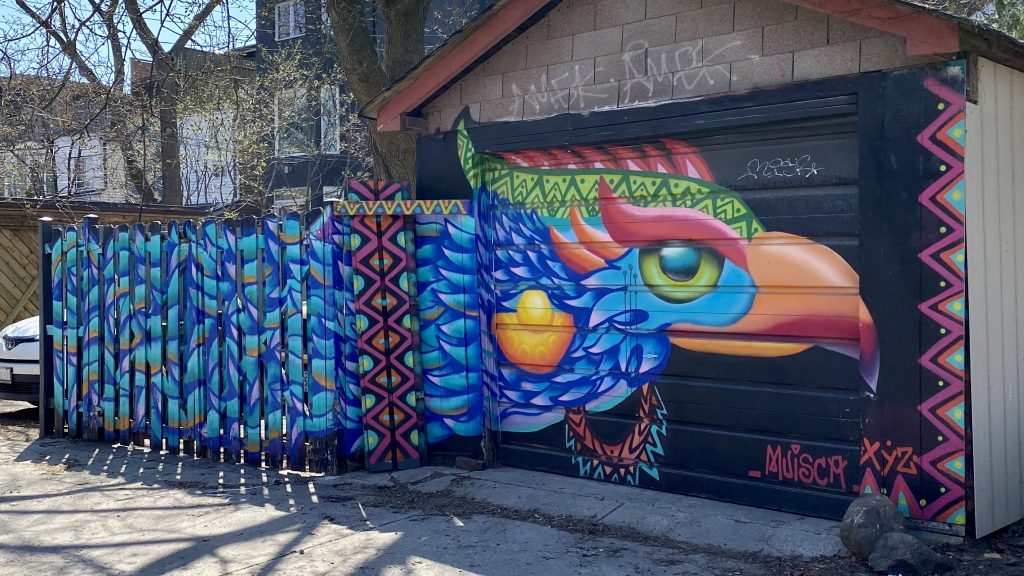
A mural on a garage door in David French Lane in the city’s University neighbourhood. CITYNEWS/Dilshad Burman
At the time, it was the largest project undertaken by StreetARToronto and brought together over local 40 artists from various different disciplines and skill levels.
“In all of our projects, mentorship is really important and this laneway as well had for example, a really seasoned artist working beside maybe an artist that has just kind of entered into that career …so this project gave multiple artists opportunities so that they could share their skills,” she says.
Fava reiterates that facilitating art and supporting as many artists as possible is a core part of their mission in the community and this garage murals project presented the perfect opportunity to do so.
“We know that there are not a lot of community-owned non-profit spaces that have this mandate that really centers the art-making, that centers cultural activity. So we have this really open policy .. fundamentally, we want to look for opportunities to simplify the experience for artists,” he says. “It would be ideal if artists could just make art — but artists have to be hustling. They have to be entrepreneurial [and] then not only develop their artistic practice but … they have to be their own accountant, they have to be their own social media managers, and on and on it goes. So the opportunity to simplify any step for an artist in any discipline, we would want to be able to do that.”
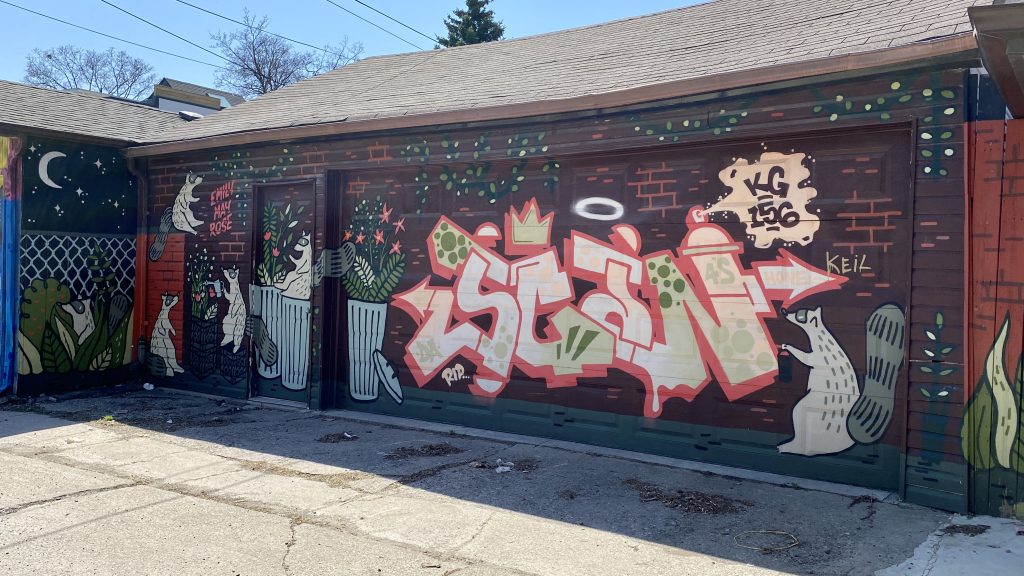
A mural on a garage door in David French Lane in the city’s University neighbourhood by artist Emily May Rose. CITYNEWS/Dilshad Burman
Over the course of two warm weekends in August, the artists transformed the garage doors on both sides of the lane into massive works of art, with support from Tranzac as well as local residents.
“It really features various stories and various connections. There’s a mural up here celebrating Margaret Atwood. There you can see just down the street Honest Ed — a big portrait. There’s the 77 Spadina bus — people are really familiar with riding that bus. So the project really kind of looks at the graffiti art, the social history of the neighbourhood, celebrating people that were here and we want to have their spirit and memory still here.”
Campbell describes it as a “vibrant community experience.”
“Some of the community members opened their garage doors and said, ‘you can store your materials,’ … there was a neighbor that gave all the artists ice cream and popsicles … they were bringing snacks and just really meeting all of the artists and also neighbors for the first time were meeting each other,” she says.
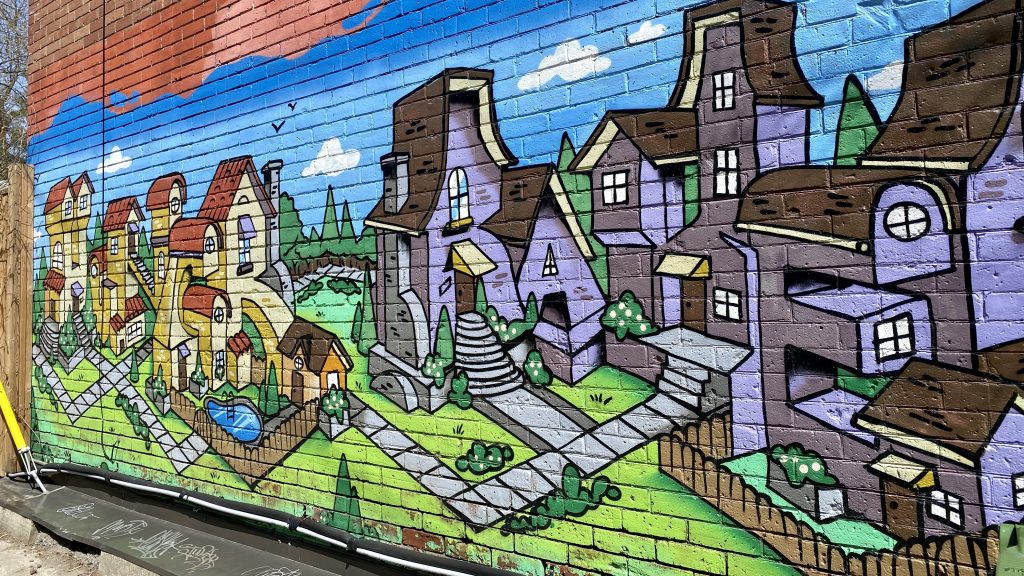
A mural on a wall leading into David French Lane in the city’s University neighbourhood. CITYNEWS/Dilshad Burman
Along with static commemoration via the murals, that dynamic community building is what Fava says the murals continue to foster.
“When we have a concert that happens inside, there’s a community that lingers afterwards. There are relationships, friendships that are built. There’s a new potential that is achieved because people are sharing space, sharing dialogue, making meaning together,” he says. “So it’s very natural for us to take that logic that we apply to the performing arts inside and apply it to what happens outside as well — to understand that when you activate a space, people gather in that space. When you gather in that space, you see these new potentials, these relationships and the kind of social cohesion that we can talk about in an idealistic way, in a lofty way, — it becomes really real.”
Find more projects in the city supported by StreetARToronto here.

